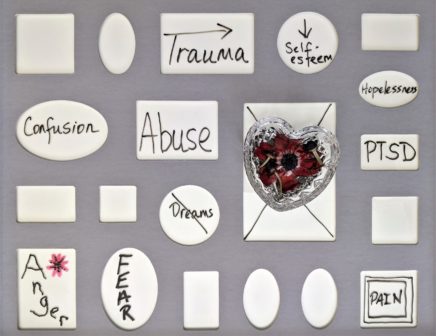Working through trauma from a schema therapy lens
laura on 11/01/2024
Photo by Aditya Saxena on Unsplash
My previous blog aimed at providing a brief overview of trauma and posttraumatic stress disorder. Click here to read more: https://yourmindmatters.net.au/a-brief-overview-of-trauma-and-posttraumatic-stress-disorder/. This blog focuses on how therapy can aid in processing past traumatic or upsetting experiences.
There is an abundance of research on various modalities for working through trauma in a therapeutic context. Here we unpack the use of imagery rescripting, a schema therapy intervention. Please note, this is not the sole treatment approach available.
What is Schema Therapy?
Schema Therapy focuses on understanding how our past experiences have shaped our schemas (beliefs specific to ourselves and the world around us). During our childhood, our needs may not have been met (e.g., our need for support, nurturance, safety/protection, emotional connection) which contributed to the development of early maladaptive schemas, unhelpful behavioural patterns and coping mechanisms.
A part of schema therapy is aimed at building attunement (‘tuning in’) to our emotional responses when faced with a triggering situation or event. It is about building awareness of how current life stressors can activate our schemas and lead to strong feelings and behavioural responses. Often, it is not the current event that evokes such an intense emotion, but more about how we interpret this event and the meaning we derive from it based on our early experiences. For instance, exposure to trauma or an upsetting event may lead to interpretations such as “This is my fault”, “I am bad/unworthy/not good enough”.
Preparation for Processing Past Trauma
Prior to moving into imagery rescripting, your clinician will complete a thorough intake and assessment. Often, it may be necessary to build emotion regulation skills and learn relaxation strategies, to ensure that you are ready to move to the part of therapy where rescripting occurs. You might be asked to complete questionnaires, which look at the symptoms you experience and the impact on your daily functioning. This can provide valuable information and can be used to measure your progress throughout treatment.
Imagery Rescripting
Imagery rescripting is a therapeutic technique, where through the guidance of a trained clinician, one re-imagines a past painful memory, entering the image from the perspective of their child self. The aim is to change the way one feels and thinks about the event, by inserting new meanings/interpretations and leading to a corrective emotional response. The focus is on imagining a different outcome where the individual’s needs (for example, for safety, protection, nurturance) are met. During an imagery rescripting exercise, one does not need to relive the traumatic or upsetting event. What occurs is that the image is paused when a ‘hot spot’ (the moment feelings of distress begin to appear) is reached, and the therapist enters the image to support the client and meet their needs.
Now at this point, you may be thinking, “but that doesn’t change what actually happened”. And you are right. We can’t go back and change the past, but what we can do is change how you think and feel about the memory. Brain studies have shown that the brain responds in a similar way to imagining and actually experiencing an event.
The process of imagery rescripting takes approximately 12-15 minutes, but can vary from person to person. Once the image has been rescripted, you will have the opportunity to reflect on the experience of the exercise with your clinician. Many clients have provided positive feedback regarding imagery rescripting and reported a shift in their emotional response and beliefs when they think of the rescripted memory. This includes feeling ‘lighter’ when thinking about the memory, feeling less distressed and reduced anxiety.
If you would like some support in working through past upsetting experiences, our team of psychologists are here to help.
This blog was written by Maria Kampantais – Psychologist and Clinical Registrar at YMM.
Maria has been consulting at YMM since 2016 and has an interest in working with clients presenting with anxiety disorders and past trauma. Maria offers a warm and supportive space to assist clients in navigating their presenting concerns and explore past painful experiences. Maria aims to support clients to build awareness into how past experiences may have shaped their belief system and subsequent emotional responses, and move towards healing through developing helpful coping mechanisms. Maria draws on various evidence-based therapies including Cognitive Behavioural Therapy (CBT), Acceptance and Commitment Therapy (ACT), mindfulness techniques, and Schema Therapy.
To learn more about Maria, check out the “Our Team” page on our website! https://yourmindmatters.net.au/our-team/


